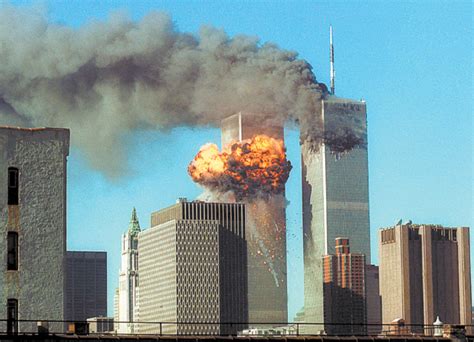It looks like you're using an Ad Blocker.
Please white-list or disable AboveTopSecret.com in your ad-blocking tool.
Thank you.
Some features of ATS will be disabled while you continue to use an ad-blocker.
share:
originally posted by: Asktheanimals
Designed into the WTC complex would be ease of access and destruction,
Such as what?
placement of key servers containing incriminating evidence including trillions of $
Except the treasury servers. The contracts and payments of contractors on their IT systems. The contracts and budget records on the DOD servers. Expect the bank records of banks handling money for the contractors.
edit on 7-4-2023 by WhatItIs because: (no reason given)
edit on 7-4-2023 by WhatItIs because: (no reason given)
A reply to: LaBTop
This first picture below, is David's original DoD, camera-1 video frame picture, with its curved Pentagon West Wall's roof top, so, not GIMP'ed yet.
The camera-2 pedestal in the far right side, which delivered unobstructed pictures (see them later, below), is clearly a tad bit right-leaning.
And the small stoplight pedestal on the left, it's long sun-shadow line, makes a small angle with the camera-2 pedestal, its short sun-shadow line.
Which is to be expected from a fish-eye lens its original video frame, which spreads in any recorded video frame, all its picture lines a bit, from out of the lens its optical center.
Just draw 2 lines from corner to corner, then, in the middle, that's probably the optical center, since we observe in each corner of the oblong picture, a small part of the lens.
Strange, because it's a oblong picture, but a round lens, I strongly presume :
[pic]dn5623a6e0.jpg[/pic ]
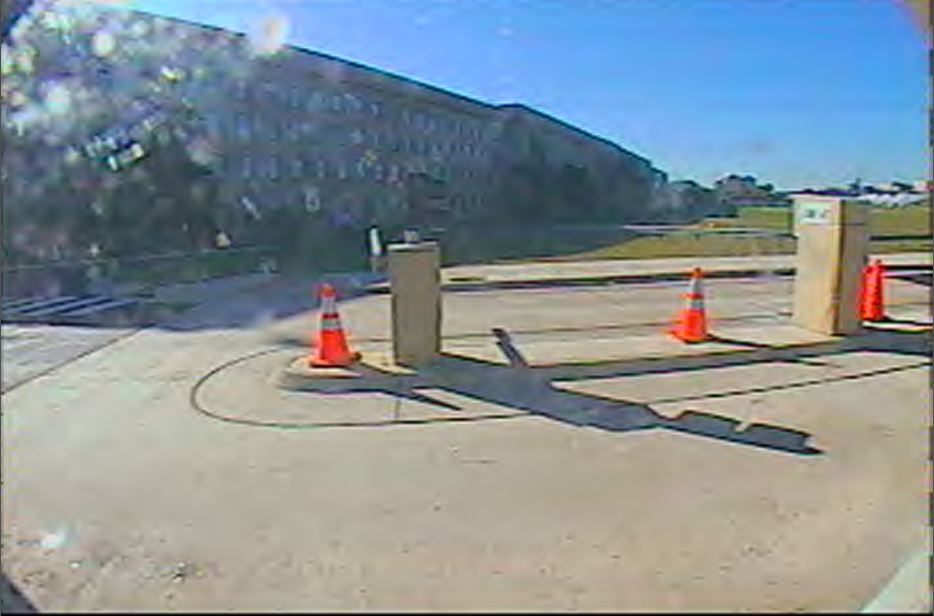
And this next one below, is David's GIMP'ed picture, after GIMP its software did restore the above DoD picture to real world dimensions, when fed with the correct horizontal and also its correct vertical GIMP instructive data settings.
The camera-2 pedestal is however STILL right leaning, it is even a tad bit MORE right leaning in this below, GIMP'ed picture by David, while it should however be standing at least a bit more straight up, and when his GIMP data would have been set to its correct horizontal and vertical settings, it would stand straight up.
And that is really VERY strange, i.m.h.op.
And the height of the camera-2 pedestal in both above and below pictures differ a bit too much.
Member Kwakatev also complains about a stretched background tree line. I advice him first to compare his picture with mine four pictures, now posted here, since i.m.h.op., his picture is quite a lot shorter at its right side.
[pic]nr63938d89.png[/pic ]
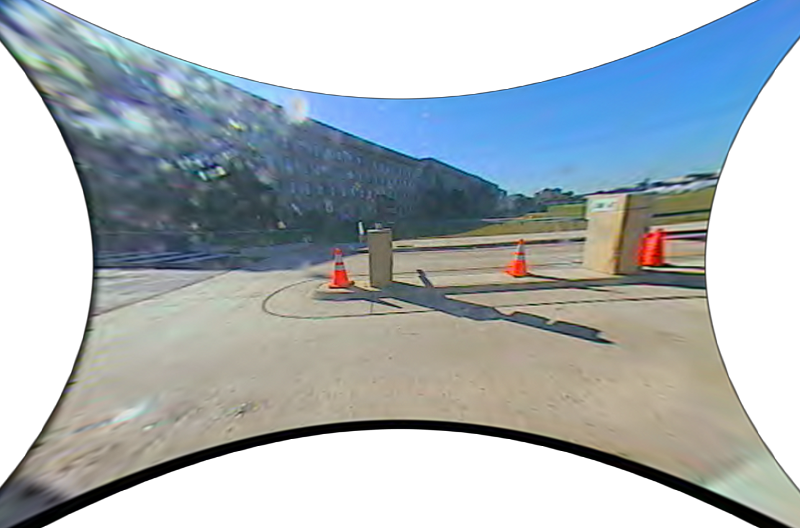
You can easily check this slightly expanding shadows and pedestals angle yourself, by using 2 small plastic triangles. Tape one, on your screen's right side, while first aligning one of the triangle its 90 degree corner sides exactly to that brownish vertical stripe on the original, oblong DoD camera-2 pedestal.
Now scroll down to the above next, now by David, GIMP'ed picture on your screen, like you see in this page. And do the same tape job for that GIMP'ed picture.
You will see the two taped (or just clamped tight, with your fingers) plastic triangle sides make an even somewhat bigger angle with each-other.
For me it's an indication that some fiddling with the vertical GIMP settings are to be tested on their influence on an eventual observable changing of the plane's length in GIMP.
All vertical and horizontal lines should be straight then.
Hopefully done by David, and preferably him instructing us ATS members and/or non-member yet, ATS readers (500,000 a week), which GIMP settings must be used, and then some interested ATS members and/or readers can follow up.
And that's how Science works, and results in new Wisdom.
.
This first picture below, is David's original DoD, camera-1 video frame picture, with its curved Pentagon West Wall's roof top, so, not GIMP'ed yet.
The camera-2 pedestal in the far right side, which delivered unobstructed pictures (see them later, below), is clearly a tad bit right-leaning.
And the small stoplight pedestal on the left, it's long sun-shadow line, makes a small angle with the camera-2 pedestal, its short sun-shadow line.
Which is to be expected from a fish-eye lens its original video frame, which spreads in any recorded video frame, all its picture lines a bit, from out of the lens its optical center.
Just draw 2 lines from corner to corner, then, in the middle, that's probably the optical center, since we observe in each corner of the oblong picture, a small part of the lens.
Strange, because it's a oblong picture, but a round lens, I strongly presume :
[pic]dn5623a6e0.jpg[/pic ]

And this next one below, is David's GIMP'ed picture, after GIMP its software did restore the above DoD picture to real world dimensions, when fed with the correct horizontal and also its correct vertical GIMP instructive data settings.
The camera-2 pedestal is however STILL right leaning, it is even a tad bit MORE right leaning in this below, GIMP'ed picture by David, while it should however be standing at least a bit more straight up, and when his GIMP data would have been set to its correct horizontal and vertical settings, it would stand straight up.
And that is really VERY strange, i.m.h.op.
And the height of the camera-2 pedestal in both above and below pictures differ a bit too much.
Member Kwakatev also complains about a stretched background tree line. I advice him first to compare his picture with mine four pictures, now posted here, since i.m.h.op., his picture is quite a lot shorter at its right side.
[pic]nr63938d89.png[/pic ]

You can easily check this slightly expanding shadows and pedestals angle yourself, by using 2 small plastic triangles. Tape one, on your screen's right side, while first aligning one of the triangle its 90 degree corner sides exactly to that brownish vertical stripe on the original, oblong DoD camera-2 pedestal.
Now scroll down to the above next, now by David, GIMP'ed picture on your screen, like you see in this page. And do the same tape job for that GIMP'ed picture.
You will see the two taped (or just clamped tight, with your fingers) plastic triangle sides make an even somewhat bigger angle with each-other.
For me it's an indication that some fiddling with the vertical GIMP settings are to be tested on their influence on an eventual observable changing of the plane's length in GIMP.
All vertical and horizontal lines should be straight then.
Hopefully done by David, and preferably him instructing us ATS members and/or non-member yet, ATS readers (500,000 a week), which GIMP settings must be used, and then some interested ATS members and/or readers can follow up.
And that's how Science works, and results in new Wisdom.
.
I'm not yet completely sure if the pedestal its right leaning in both DoD and GIMP versions, will have a resulting shrinking of AA77 its visible
length in the GIMP'ed version, but I begin to get the impression, that some small part of the right half of David's GIMP pictures have been stretched
a tad bit too far.
Which we have to check of course also in his unobstructed camera-2 original DoD picture, and its then GIMP'ed picture.
First let's post below, my on 10 Dec 2022 posted original, maximum 500 x zoomed in, right-side part picture again.
Easily recognizable for the small curved out right side piece.
From David's GIMP'ed DoD full video frame picture, and that is the second one below.
Where we can measure the plane length (154 ft = full B757-203 well known plane length) as two times the West Wall its known height of 77 ft, at the known point of impact at facade column 14 :
[pic]ct6390d458.png[/pic ]
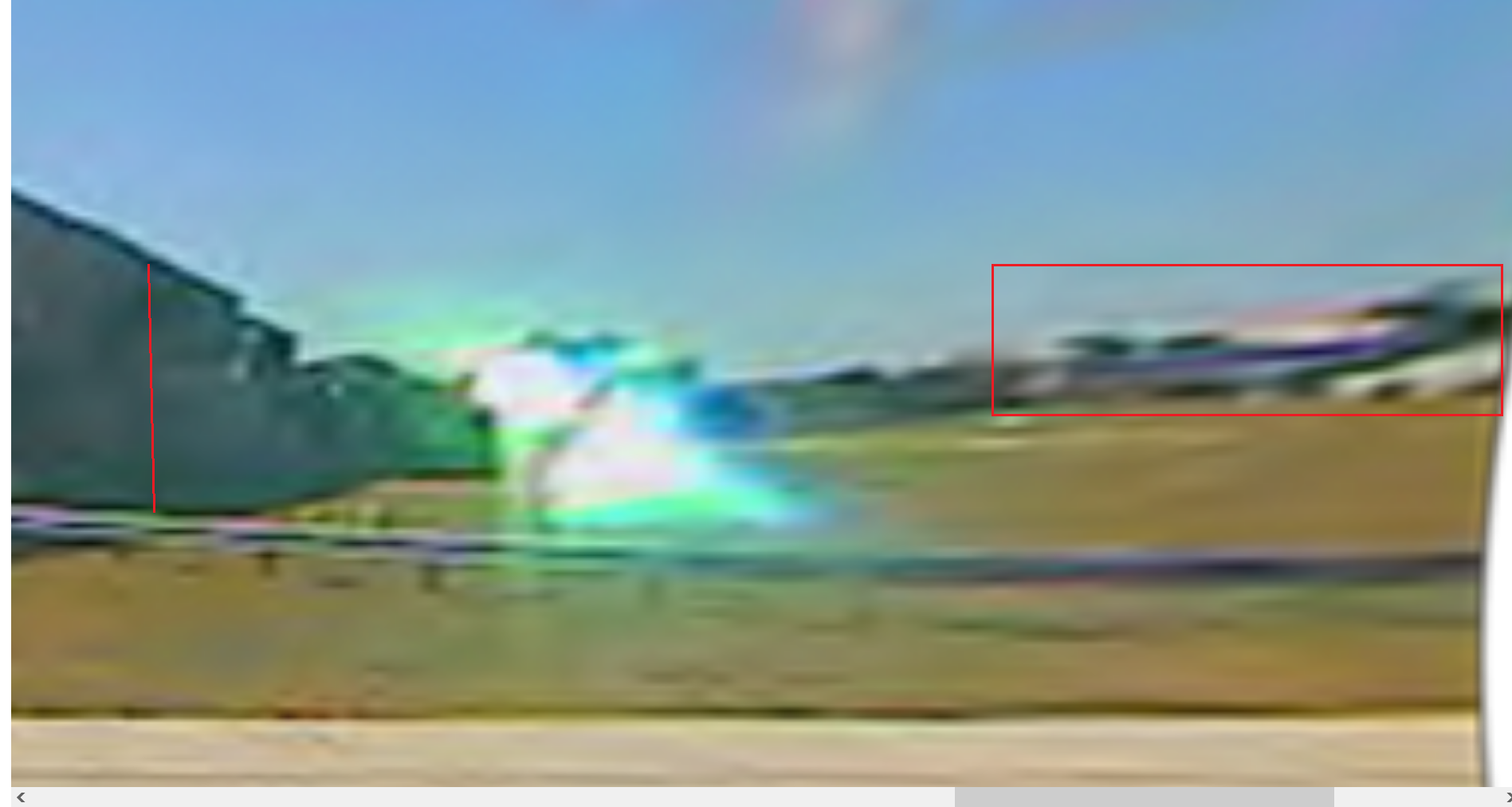
Then David's full GIMP'ed DoD picture :
[pic]xw63938fdb.png[/pic ]
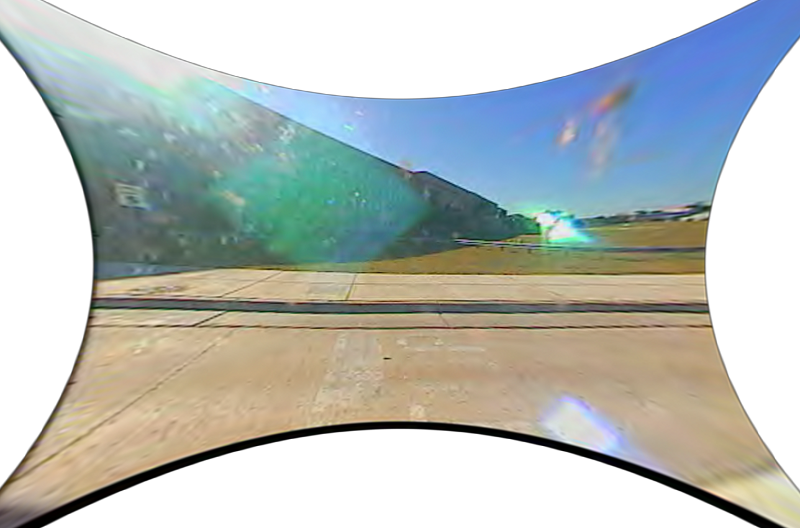
And below, David's original DoD video frame picture, not GIMP'ed :
[pic]lu56240562.jpg[/pic ]
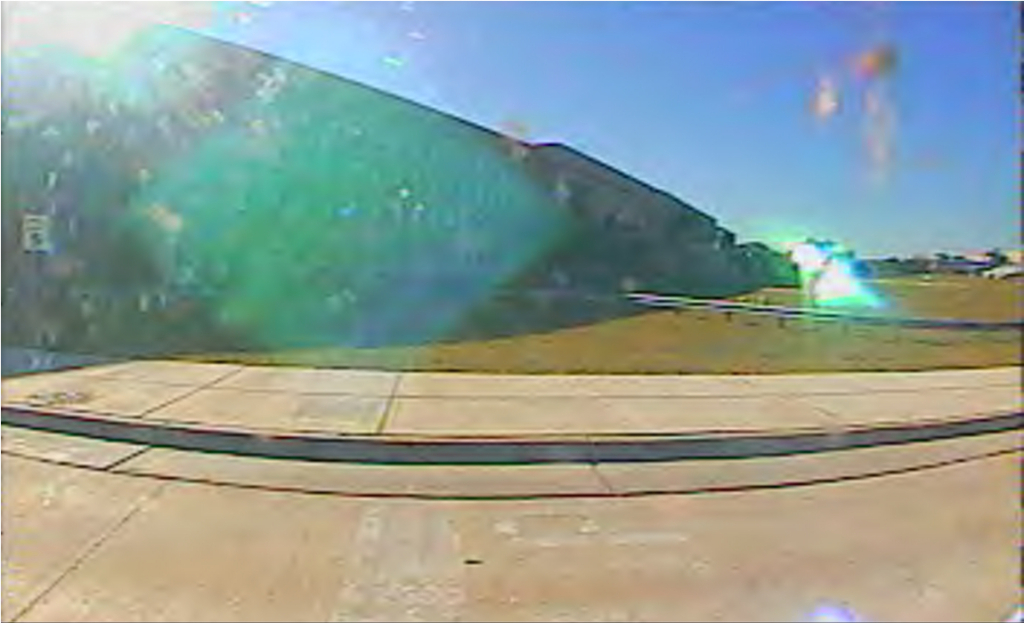
I have to ask David all this, since in my humble opinion, this could be the only possible answer, which could change this EVIDENCE to a bit shorter than a GIMP-visible 155 ft for the GIMP'ed plane length, compared to the visible known height of the Pentagon's West Wall of 77 ft.
I expect that it will shorten the 154 ft length a bit, because when we GIMP also the vertical camera-1 pedestal box lines, I think that would lead to a somewhat shortening of the horizontal lines, including the visible plane's length, above that pedestal.
And subsequently also in the camera-2 footage, unobstructed, no pedestal, with the visible plane at the outer right side of the GIMP'ed picture.
I am quite curious what plane length shrinking that would cause, when using these same new GIMP data settings, as used in the camera-1 GIMP pedestal footage.
However, I am quite sure that such plane length shortening would not be so extensive that the visible GIMP'ed plane length would shrink as far as to 104 ft, the 45 degrees 2/3rd length of a real B757-203, that must show up on camera, if it was a 45 degree attack path for AA77.
I expect it to shorten AA77's GIMP'ed plane length to a length that will belong to a 80 or > 80 degrees attack path.
Which then gave more passing space at the southern side of those two semi-tall trees that stood beside Washington Boulevard and the Pentagon's grassy lawn.
.
Which we have to check of course also in his unobstructed camera-2 original DoD picture, and its then GIMP'ed picture.
First let's post below, my on 10 Dec 2022 posted original, maximum 500 x zoomed in, right-side part picture again.
Easily recognizable for the small curved out right side piece.
From David's GIMP'ed DoD full video frame picture, and that is the second one below.
Where we can measure the plane length (154 ft = full B757-203 well known plane length) as two times the West Wall its known height of 77 ft, at the known point of impact at facade column 14 :
[pic]ct6390d458.png[/pic ]

Then David's full GIMP'ed DoD picture :
[pic]xw63938fdb.png[/pic ]

And below, David's original DoD video frame picture, not GIMP'ed :
[pic]lu56240562.jpg[/pic ]

I have to ask David all this, since in my humble opinion, this could be the only possible answer, which could change this EVIDENCE to a bit shorter than a GIMP-visible 155 ft for the GIMP'ed plane length, compared to the visible known height of the Pentagon's West Wall of 77 ft.
I expect that it will shorten the 154 ft length a bit, because when we GIMP also the vertical camera-1 pedestal box lines, I think that would lead to a somewhat shortening of the horizontal lines, including the visible plane's length, above that pedestal.
And subsequently also in the camera-2 footage, unobstructed, no pedestal, with the visible plane at the outer right side of the GIMP'ed picture.
I am quite curious what plane length shrinking that would cause, when using these same new GIMP data settings, as used in the camera-1 GIMP pedestal footage.
However, I am quite sure that such plane length shortening would not be so extensive that the visible GIMP'ed plane length would shrink as far as to 104 ft, the 45 degrees 2/3rd length of a real B757-203, that must show up on camera, if it was a 45 degree attack path for AA77.
I expect it to shorten AA77's GIMP'ed plane length to a length that will belong to a 80 or > 80 degrees attack path.
Which then gave more passing space at the southern side of those two semi-tall trees that stood beside Washington Boulevard and the Pentagon's grassy lawn.
.
originally posted by: WhatItIs
originally posted by: LaBTop
These thermobaric bombs their operational conditions, still kept secret for the normal public, up to even today.
Otherwise magic to make the conspiracy theory work with no explanation why there wasn’t cratering in the Pentagon sub flooring where flight 77 entered. How many times has truth movement supporters posted no floor damage? But in reality explain by a jet traveling more or less parallel to the concrete subfloor. But not by explosives.
This is an early picture, shot by a later famous 9/11 Pentagon photographer, only 20 minutes after the impact by AA77.
I strongly suspect that to be the backfire of a directional thermobaric explosion in the impact hole. See the 3 cable spools in front of that hole:
[pic]qm4fd946ee.JPG[/pic ]

If I remember it right, that was shot, when everyone was pushed back to the West side of Washington Boulevard, caused by the thread of a 4th plane (Flight 93), coming towards the White House, or the Pentagon again.
See the totally cleaned of any humans, Pentagon lawn.
After this, or already earlier, the Special Forces have blown-in their circular Entrance hole, in the brick wall of the A-E Drive its E-wall. And started unhindered with their ONI operation, to clean out all the incriminating evidence for the 9/11 Planners from the ONI offices their main frame computers tape spools, and all other Hard-disks and further paper documents.
See also the greenish diesel tank of the generator trailer in the fenced-in corner spot at the right side of the above picture.
The so-called huge ""dent"" presumably caused by AA77 its right jet engine,was not a dent, it was its original form.
I posted a very difficult to become picture of the situation from above, a day earlier, in this thread. You can see in there, that the diesel tank had that dented outlook form already.
The very distinctive sign for a huge TB explosion, is a very, very low UMPFFFHHhh sound, nearly not audible for the normal adult.
Children hear it a lot better, with their broader audio spectrum capabilities.
Try an ATS Search of this 9/11 Forum, for far more TB details, with these search words : LaBTop thermobaric
As I only just found out, the ATS Search at its former top-right position, is gone.
In the ATS its ""About Above TopSecret"" page, part of one of the last sentences is now :
.
... perform a search-engine search on topics such as 9/11 ...
Lots of us will miss that feature enormously. It was one of the best ATS features, fast and reliable, always there, on top of every 9/11 page.
My hopes are high that the ATS admins will find a way to restore that ATS Search function, while busy with the ongoing operations to clean up the recent software hick-ups.
.
This was the Pentagon's West Wall facade, newly reinforced, at its column 14, the 90 degree impact point, so, not a simple brick wall, see those newly
installed steel window frames :
[pic]qh574dca3a.jpg[/pic ]
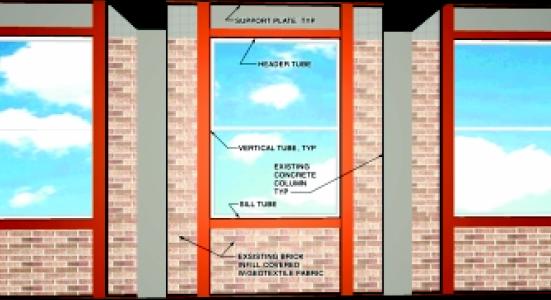
And below is a wall section position at the left side of facade column 14, the impact point, where part of the left wing impacted, but not entered the brick wall, not even deformed the steel window frames, just broke the glass and peeled off some marble plates, which is again evidence of a much slower ~ 260 MPH end speed, than the official pushed crazy end speed of ~524 MPH / 817 KM/hr :
[pic]tz574d7a0f.jpg[/pic ]
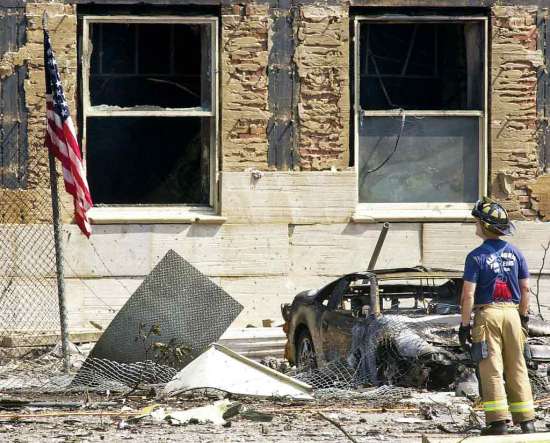
AA77 did not enter the Pentagon facade along a 45 degree attack path, at a crazy end speed of ~ 817 Km/hr or i.o.w., ~ 542 MPH.
That's now sufficiently proven in this thread.
.
[pic]qh574dca3a.jpg[/pic ]

And below is a wall section position at the left side of facade column 14, the impact point, where part of the left wing impacted, but not entered the brick wall, not even deformed the steel window frames, just broke the glass and peeled off some marble plates, which is again evidence of a much slower ~ 260 MPH end speed, than the official pushed crazy end speed of ~524 MPH / 817 KM/hr :
[pic]tz574d7a0f.jpg[/pic ]

AA77 did not enter the Pentagon facade along a 45 degree attack path, at a crazy end speed of ~ 817 Km/hr or i.o.w., ~ 542 MPH.
That's now sufficiently proven in this thread.
.
That plane hit straight on the Pentagon's West Wall's facade its column 14, thus, not at the shown 42 degree plane impact angle, as can be concluded
from the by David Chandler's GIMP'ed, original DoD frames, it hit at an ~ 80 to 90 degrees angle, as you can see as the "Collapsed Area" in the 2
next, below diagrams :
[pic]gj4f5e0332.jpg[/pic ]
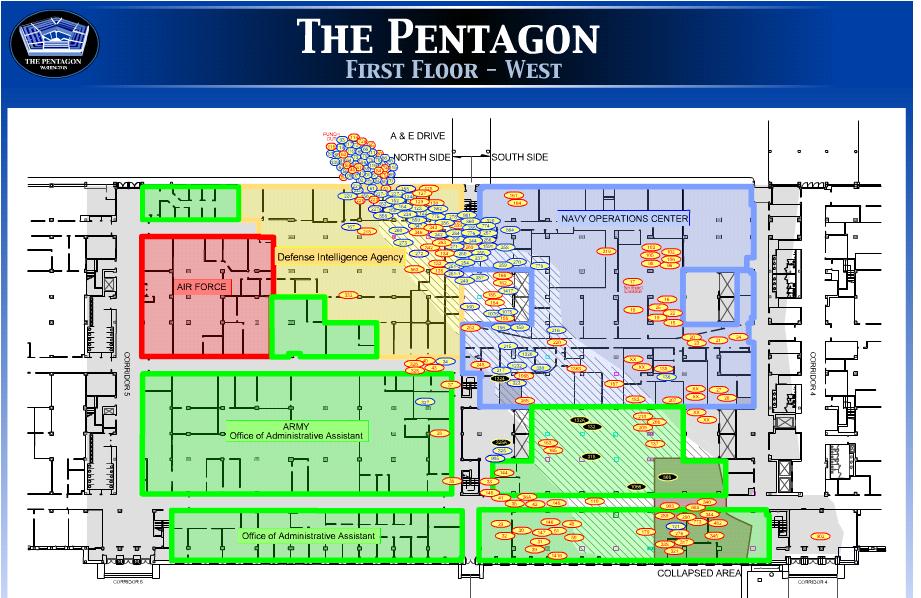
[pic]la4fed16fb.JPG[/pic ]
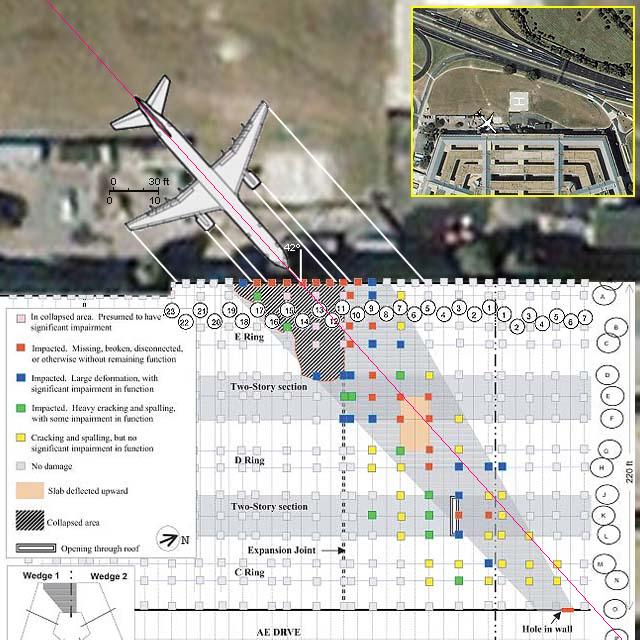
The later ""Collapsed area"" black portion is how deep the Boeing 757-203 in fact penetrated.
At an end speed of ~ 265 MPH, that's half of what all the US sources told you, and still tries to tell the more and more worrying ATS-readers of this thread :
[pic]ld4f5e6624.JPG[/pic ]
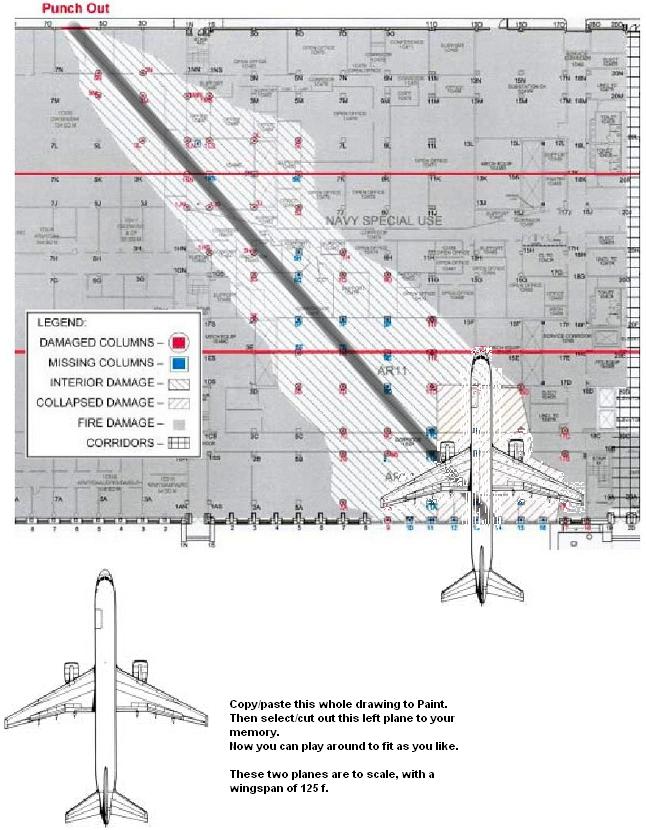
While AA77 was coming out of that, in reality flown, below picture's starting purple line, at a slightly lower speed of ~ 260 MPH and along a ~ 28 to 30 degrees angled first part of a slightly left-leaning curved flight path, forced by the too high Police Station VDOT radio mast on the other side of the road along the southwestern corner of the first wing of the then Navy Annex its 8 wings, then curving right again just North of the CITGO gas station, back on a its attack flight path straight onto the Pentagon's West Wall's column 14 :
[pic]bn56213bce.JPG[/pic ]
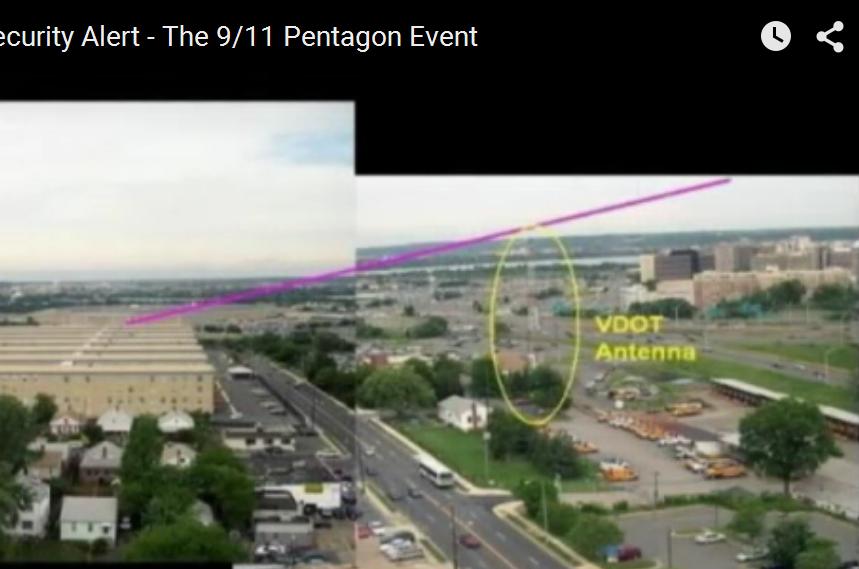
.
[pic]gj4f5e0332.jpg[/pic ]

[pic]la4fed16fb.JPG[/pic ]

The later ""Collapsed area"" black portion is how deep the Boeing 757-203 in fact penetrated.
At an end speed of ~ 265 MPH, that's half of what all the US sources told you, and still tries to tell the more and more worrying ATS-readers of this thread :
[pic]ld4f5e6624.JPG[/pic ]

While AA77 was coming out of that, in reality flown, below picture's starting purple line, at a slightly lower speed of ~ 260 MPH and along a ~ 28 to 30 degrees angled first part of a slightly left-leaning curved flight path, forced by the too high Police Station VDOT radio mast on the other side of the road along the southwestern corner of the first wing of the then Navy Annex its 8 wings, then curving right again just North of the CITGO gas station, back on a its attack flight path straight onto the Pentagon's West Wall's column 14 :
[pic]bn56213bce.JPG[/pic ]

.
As witnessed by those three National Cemetery workers, standing on their NC Parking space, available on their video interview by the famous CIT team
of two.
The Citizens Investigation Team, they were all these years correct in their also 90 degrees attack path and NoC flight path opinion.
A real pity for them and their huge 9/11 work, that they also insisted on their other opinion, that AA77 overflew the Pentagon, when it really did not do that, it impacted at column 14 in the Pentagon's West Wall facade.
[pic]db4f843f40.JPG[/pic ]
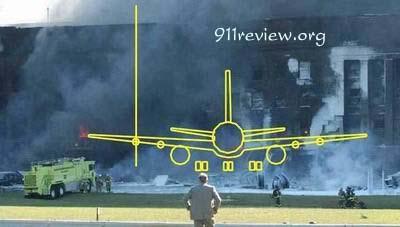
This shows a straight impacting B757-203, so, under an ~ 80 to 90 degrees angle.
However, it should be with no wheels out, like in the above one, and its nose cone and fuselage should be ~ 1 meter lower than as above pictured, since its nose cone with its strongest longitudinal aluminum beam in it, hit exactly on the full first floor's steel-reinforced concrete, that covered the ceilings of the first floor's Wedges C, D and E.
Which flight path its ~ 28 to 30 degrees angled and curved dimensions around the then there situated northern space of the CITGO gas station position, could never allow for any speed higher than around that mentioned and calculated, definitely not possible higher speed of more than ~ 260 MPH.
Thus never that crazy, still officially proposed, two times faster speed of 817 Km/hr, 542 MPH .
.
And now, I go read page 41 from 177, of that huge thread by Kwakatev, titled "Trying to resolve 911"
www.abovetopsecret.com...
.
The Citizens Investigation Team, they were all these years correct in their also 90 degrees attack path and NoC flight path opinion.
A real pity for them and their huge 9/11 work, that they also insisted on their other opinion, that AA77 overflew the Pentagon, when it really did not do that, it impacted at column 14 in the Pentagon's West Wall facade.
[pic]db4f843f40.JPG[/pic ]

This shows a straight impacting B757-203, so, under an ~ 80 to 90 degrees angle.
However, it should be with no wheels out, like in the above one, and its nose cone and fuselage should be ~ 1 meter lower than as above pictured, since its nose cone with its strongest longitudinal aluminum beam in it, hit exactly on the full first floor's steel-reinforced concrete, that covered the ceilings of the first floor's Wedges C, D and E.
Which flight path its ~ 28 to 30 degrees angled and curved dimensions around the then there situated northern space of the CITGO gas station position, could never allow for any speed higher than around that mentioned and calculated, definitely not possible higher speed of more than ~ 260 MPH.
Thus never that crazy, still officially proposed, two times faster speed of 817 Km/hr, 542 MPH .
.
And now, I go read page 41 from 177, of that huge thread by Kwakatev, titled "Trying to resolve 911"
www.abovetopsecret.com...
.
a reply to: LaBTop
Working with image distortion issues are strange, can be a real headbanger at times. To aid in this process I applied the same lens distortion settings to camera B to see what effect it would have on the camera A pedestal. It does come up looking straighter and less distorted than David's results.
At this time the ATS image upload feature is not updating correctly. When it working again I will post a side by side comparison.
The camera-2 pedestal is however STILL right leaning, it is even a tad bit MORE right leaning in this below, GIMP'ed picture by David, while it should however be standing at least a bit more straight up, and when his GIMP data would have been set to its correct horizontal and vertical settings, it would stand straight up. And that is really VERY strange, i.m.h.op.
Working with image distortion issues are strange, can be a real headbanger at times. To aid in this process I applied the same lens distortion settings to camera B to see what effect it would have on the camera A pedestal. It does come up looking straighter and less distorted than David's results.
At this time the ATS image upload feature is not updating correctly. When it working again I will post a side by side comparison.
a reply to: LaBTop
My understanding of a thermobaric explosion is a two stage process. The first stage is a small explosion that disperses a reactive agent effectively making a larger bomb and resulting in a faster oxidation process. The second stage ignites this reactive agent.
From looking into it years ago, there where a few witness statements claiming there was a strong smell of cordite in the air, a more typical and commonly used explosive.
I agree with this part.
I strongly suspect that to be the backfire of a directional thermobaric explosion in the impact hole
My understanding of a thermobaric explosion is a two stage process. The first stage is a small explosion that disperses a reactive agent effectively making a larger bomb and resulting in a faster oxidation process. The second stage ignites this reactive agent.
From looking into it years ago, there where a few witness statements claiming there was a strong smell of cordite in the air, a more typical and commonly used explosive.
the Special Forces have blown-in their circular Entrance hole, in the brick wall of the A-E Drive its E-wall. And started unhindered with their ONI operation
I agree with this part.
edit on 8-4-2023 by kwakakev because: grammer
a reply to: WhatItIs
On initial inspection I cannot tell the difference between the x,y,z images. As for overexposure being meaningless, I prefer to call it beyond the range of the sensor. If you are expecting to be recording a high intensity light scene, various lens filters can be applied to provide more clarity to what it is you want to see.
Some post production filters can help a little in providing some clarity to an overexposed recording, but will only go so far as a lot of the original data has been lost due to the limitations of the sensor.
As what what causes only one frame to be overexposed, reminds me of the 'Shock and Awe' campaign. Lot of short bright flashes followed up by big raising fireballs that night.
Picture x, y, and picture z. Zoom’s of the recording media over exposed. One is the jet flame, one is the exploding missile, one is of a utility light. Can you tell which is which from the jet flame vs the missile vs the utility light? Recording media over exposed becomes meaningless areas.
On initial inspection I cannot tell the difference between the x,y,z images. As for overexposure being meaningless, I prefer to call it beyond the range of the sensor. If you are expecting to be recording a high intensity light scene, various lens filters can be applied to provide more clarity to what it is you want to see.
Some post production filters can help a little in providing some clarity to an overexposed recording, but will only go so far as a lot of the original data has been lost due to the limitations of the sensor.
As what what causes only one frame to be overexposed, reminds me of the 'Shock and Awe' campaign. Lot of short bright flashes followed up by big raising fireballs that night.
originally posted by: kwakakev
originally posted by: LaBTop
Your remark about the bright white flash at the moment of impact of AA77, which you see not at the two WTC impacts, will have been the result of the difference between a relatively massive thick stone Pentagon wall with small windows and decked with a layer of marble plates, recently renewed, and a glass decked open frame between relatively thin WTC floors.
At the WTC, the planes their super heated by the impact, tiny aluminum pieces of the fuselage and their wings and inner hull, splattered by the impacts forces, on top of that loaded with their splattered fuel tanks its J6 jet fuel, were mainly shot into and in between the open space between the thin WTC upper floors and exploded for the most part thus inside the buildings, while thereafter the last part of the exploded fuel plus aluminum, spit partly backwards out again, caused by the immediate pressure increase in front of the momentarily locked up burning gases, and that was the first and second fuel/air explosive parts we saw at 260 m and 220 m up there, so from a view at the lower part of that ricocheted reddish explosion cloud, with just a touch of white inside it.
While at the Pentagon, the first main bulk of the J6 fuel plus the super heated exploding aluminum parts cloud in it, exploded against the relatively more massive bricks wall segment, with their strong, re-barred window frames, and only after that, in the following split second, the wall was gone and it all started to enter the reasonable empty space behind that wall.
.
Nice try, but some things ain't adding up. Why is there not a similar super heated aluminum explosion in this jet test crash into a very strong and solid block? There is no strong bright white light generated on impact.
Also a lot of inconsistencies with how jet fuel does ignite after such an incident.
While there is a fireball at the pentagon after the strike, it is not on the same scale and time frame as what happened at the WTC towers. It took a few frames for the fuel to spread out in all directions at the WTC, not just up as at the Pentagon. Why is there no jet fuel fire ball growing out of the hole made by the object striking the Pentagon and extending out over the lawn?
I can see you have done a lot of good work and research trying to make sense of these things. I know it ain't easy.
Kwakatev,
The picture you posted before, of a fighter jet impact test, had no fuel loaded, but the rocket sled the jet was clamped on, you can clearly see still burning its last bit of calculated fuel, under the jet in your photo, speeding at 500 MPH on rails.
If you proceed to the video its next frame, you'll see the huge spreading of the white impact cloud of pulverized and atomized cement, and aluminum plane parts and gasses of the atomized plane and concrete and cement of the test block.
And since the test plane's fuel tanks were totally empty, we see not the to be expected ignition of that pure white colored cloud. Since there was no fuel in that test cloud. Only already burned off rocket sled gasses.
Total Destruction Redux: F4 Phantom vs. Concrete Wall - Additional Camera Angles (2:52 minutes)
youtu.be...
youtu.be...
youtu.be...
youtu.be...
This was btw, the older video :
Fighter Jet Crash Test (10:02 minutes)
youtu.be...
youtu.be...
Another test :
Rocket Sled Impact Test In Slow-Motion.
Sandia National Labs. (3:07 minutes)
www.youtube.com...
And this is what happens when a, > 2/3rd full of fuel, huge passenger plane, B757-203, impacts in a steel windows-reinforced bricks and marble plated building facade, and its re-barred concrete first floor :
files.abovetopsecret.com...
[pic]dy56280a0b.PNG[/pic link now readable, without that last ]

[pic]mj59005b07.gif[/pic ]
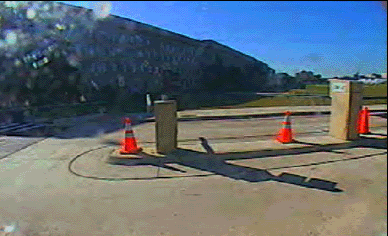
.
originally posted by: kwakakev
a reply to: LaBTop
I strongly suspect that to be the backfire of a directional thermobaric explosion in the impact hole
My understanding of a thermobaric explosion is a two stage process. The first stage is a small explosion that disperses a reactive agent effectively making a larger bomb and resulting in a faster oxidation process. The second stage ignites this reactive agent.
From looking into it years ago, there where a few witness statements claiming there was a strong smell of cordite in the air, a more typical and commonly used explosive.
the Special Forces have blown-in their circular Entrance hole, in the brick wall of the A-E Drive its E-wall. And started unhindered with their ONI operation
I agree with this part.
You forget 2 important features of a TB :
1. The explosion sound is a very, very low sound, adults can not hear it as loud as everyone expects from a bomb, only young children can. And especially when TBs are exploded 260 and 220 meters high in both towers, and inside the core region, no flashes there on the outside, no huge explosion clouds spitting out there, only the few thin ones we have video from, tens of meters lower than both collapse fronts. But they spit out for far too long distances, to have been compression clouds, they were also far too thin and long formed for that.
2. There are no material traces to be found, all solids are atomized and burned, all resulting gasses are dispersed in the air, no traces of a TB to be found anymore after a TB went off.
Look up in the ATS Search, it works again :
www.abovetopsecret.com...
Fill in : LaBTop thermobaric
Then hit the Return key, on your keyboard.
.
My Jan, 2007 Title : Barometric or A-neutronic bomb, any more info?
www.abovetopsecret.com... (3 pages)
This post of mine in there is still applicable these days, READ it please :
Sadly, www.studyof911.com is gone, a real loss for us longtime 9/11 researchers.
www.abovetopsecret.com... (3 pages)
This post of mine in there is still applicable these days, READ it please :
originally posted by: LaBTop
Did you READ the WHOLE TEXT of my first link?
www.studyof911.com...
and then read all other links provided in there?
There is an immense amount of info in there, which cost me months of research.
Is there some mechanism in place in the modern (USA and ??) schooling system, which let all young western pupils avoid READING more than a few sentences?
Or is it just the effect of modern indoctrinating techniques, implemented in all advertising ads on television?
Which teach you day by day that only a few very fast pronounced sentences, played out as loud as can be, mostly 3 times louder than the preceding programming, can attract the attention of the viewers for a few moments.
For well done research, you must meticulously follow all leads and lines, found in numerous conversations, books and online info, then try to compare valuable pieces of info, and put them together in a feasibility scheme.
This can provide you with a few possible demolition techniques, used on 9/11 and other events before that date.
I strongly suspect some sort of a barometric bomb was used at several floors in the WTC Towers, triggered by simple shock and movement sensitive mercury switches.
A top to bottom demolition would then subsequently trigger all mercury switches.
The barometric bomb suspensions will have been stored in the most simple containers, like boxed-in inside core columns, or better in the fire department emergency standpipes in all 3 towers, which coincidentally ALL were not in working order on 9/11 , so also not in WTC 7.
Sadly, www.studyof911.com is gone, a real loss for us longtime 9/11 researchers.
If David Chandler's GiIMP'ed pictures turn out, after straightening out that right leaning camera-2 pedestal, to be really depicting a recorded attack
angle of Flight AA77, of 80 to 90 degrees of an angle to the Pentagon's West Wall facade, impacting at column 14, all based on a measurable length of
~ 140 to 154 ft, then we have to take in account, that the end speed of AA77 following that long turn around the North side of the CITGO gas station
could have never been more than ~ 265 MPH. And impossible to have been 524 MPH, 817 KM/hr.
While its turning speed was starting, with a by all radars registered last reliable airspeed of ~ 250 MPH, at ~40 meters South of the Sheraton Hotel.
We REALLY need some ATS-reader or ATS-member to check what the result of a GIMP'ed original DoD picture of David will be, when that camera-2 pedestal will be straightened and doesn't lean to the right anymore. That can only be done by changing the vertical input data in GIMP, or Photoshop, or 3D-Paint ?
Only then I can conclude with 100 % certainty, that the measured 154 ft length of AA77 in David's GIMP'ed pictures, is really 2 x the West Wall's height of 77 ft at the point of impact of AA77 at column 14 and at the first floor in the facade.
When that is done, the truth will prevail, and a majority of ATS members and readers will have to abandon their 21 years long, strictly patriotic standpoint, since there was nothing at all patriotic connected for the planners, on 9/11/2001. It was pure greed, that was the basis of what happened that day, and before and after.
.
While its turning speed was starting, with a by all radars registered last reliable airspeed of ~ 250 MPH, at ~40 meters South of the Sheraton Hotel.
We REALLY need some ATS-reader or ATS-member to check what the result of a GIMP'ed original DoD picture of David will be, when that camera-2 pedestal will be straightened and doesn't lean to the right anymore. That can only be done by changing the vertical input data in GIMP, or Photoshop, or 3D-Paint ?
Only then I can conclude with 100 % certainty, that the measured 154 ft length of AA77 in David's GIMP'ed pictures, is really 2 x the West Wall's height of 77 ft at the point of impact of AA77 at column 14 and at the first floor in the facade.
When that is done, the truth will prevail, and a majority of ATS members and readers will have to abandon their 21 years long, strictly patriotic standpoint, since there was nothing at all patriotic connected for the planners, on 9/11/2001. It was pure greed, that was the basis of what happened that day, and before and after.
.
a reply to: LaBTop
There are still a few parts of it left on the waybackmachine.com, have to go back to near the start of the website captures to find it. Has been a lot of good sites and sources fall away over the years, some doing better than others. One still hanging on and standing on solid ground,
ae911truth.org
Some kind of barometric or “high potential electrostatic field" is on the suspect list. Have seen some theories around this, not much hard evidence. I can understand what you are trying to say that the jet fuel in the plane produced some barometric effect.
I disagree. At least some of the building got breached by the object. Some of the jet fuel would of gone all over the place inside the building as it did with WTC 1&2. As the jet fuel sprays around, the fire ball more gradually grows in size over a few frames, not just one. For Jet fuel to be the source of this explosion at the Pentagon, it is missing a fireball growing out of the path into the building and extending out over the lawn more than what we see.
At the Pentagon we get one quick flash, then a fire ball only going straight up.
With the math on David's pictures I agree. As for how David got to this conclusion I disagree.
Sadly, www.studyof911.com is gone, a real loss for us longtime 9/11 researchers.
There are still a few parts of it left on the waybackmachine.com, have to go back to near the start of the website captures to find it. Has been a lot of good sites and sources fall away over the years, some doing better than others. One still hanging on and standing on solid ground,
ae911truth.org
Some kind of barometric or “high potential electrostatic field" is on the suspect list. Have seen some theories around this, not much hard evidence. I can understand what you are trying to say that the jet fuel in the plane produced some barometric effect.
I disagree. At least some of the building got breached by the object. Some of the jet fuel would of gone all over the place inside the building as it did with WTC 1&2. As the jet fuel sprays around, the fire ball more gradually grows in size over a few frames, not just one. For Jet fuel to be the source of this explosion at the Pentagon, it is missing a fireball growing out of the path into the building and extending out over the lawn more than what we see.
At the Pentagon we get one quick flash, then a fire ball only going straight up.
Only then I can conclude with 100 % certainty, that the measured 154 ft length of AA77 in David's GIMP'ed pictures, is really 2 x the West Wall's height of 77 ft at the point of impact of AA77 at column 14 and at the first floor in the facade.
With the math on David's pictures I agree. As for how David got to this conclusion I disagree.
a reply to: LaBTop
The GIMP Lens Distortion filter settings are:
Main: 30
Edge: -7
Zoom: 0
Shift X: 60
Shift Y:70
It is good to see you are starting to get it. Raising the Shift Y setting does fiddle with the vertical setting. Having this value in line with the object flight path will reduce the distortion the most along this axis.
With the Shift X value I aimed for an area between the object and the building wall to reduce the distortion the most in this area of the image and aim for a more accurate object measurement.
By centering the lens distortion this way, the main setting does not have to be too strong to just focus on the main part of the picture in question.
My numbers will be off a small fraction, I wanted to round the numbers of to help with others wanting to try this technique and have somewhere to start in experimenting with the lens distortion tool and how it affects the image.
With the ATS image upload still in a glitch for me, it is going to take a few days to help present the case I am trying to argue better.
For me it's an indication that some fiddling with the vertical GIMP settings are to be tested on their influence on an eventual observable changing of the plane's length in GIMP. All vertical and horizontal lines should be straight then.
The GIMP Lens Distortion filter settings are:
Main: 30
Edge: -7
Zoom: 0
Shift X: 60
Shift Y:70
It is good to see you are starting to get it. Raising the Shift Y setting does fiddle with the vertical setting. Having this value in line with the object flight path will reduce the distortion the most along this axis.
With the Shift X value I aimed for an area between the object and the building wall to reduce the distortion the most in this area of the image and aim for a more accurate object measurement.
By centering the lens distortion this way, the main setting does not have to be too strong to just focus on the main part of the picture in question.
My numbers will be off a small fraction, I wanted to round the numbers of to help with others wanting to try this technique and have somewhere to start in experimenting with the lens distortion tool and how it affects the image.
With the ATS image upload still in a glitch for me, it is going to take a few days to help present the case I am trying to argue better.
originally posted by: kwakakev
A reply to: LaBTop
I can understand what you are trying to say that the jet fuel in the plane produced some barometric effect.
No, that's definitely NOT what I'm trying to say. I try to explain that the 45 degree internal damage path can or must have been created with TB's. Since it leaves no traces of the TB bomb material, it's all gaseous in the end, and its sound is a very low one.
LaBTop :
Only then I can conclude with 100 % certainty, that the measured 154 ft length of AA77 in David's GIMP'ed pictures, is really 2 x the West Wall's height of 77 ft at the point of impact of AA77 at column 14 and at the first floor in the facade.
Kwakatev :
With the math on David's pictures I agree. As for how David got to this conclusion I disagree.
David missed that conclusion, he forgot to make an overall picture with the plane and wall both in it, to include an extra artifact with a known height in it. I seem to be the only one to have done that.
a reply to: LaBTop
I don't know much about what happened behind the Pentagon wall that day. Seen some photos and drawings, not enough for a clear picture of the damage inside and help find the likely flight angle that way.
As for trying to define the flight angle another way, how the contrail sits on the ground and slowly dissipates after the overexposed frame might be one way? It does leave a reference line along the ground. As for getting no distortion, an accurate measure and what kind or error rate it will have?
I try to explain that the 45 degree internal damage path can or must have been created with TB's.
I don't know much about what happened behind the Pentagon wall that day. Seen some photos and drawings, not enough for a clear picture of the damage inside and help find the likely flight angle that way.
As for trying to define the flight angle another way, how the contrail sits on the ground and slowly dissipates after the overexposed frame might be one way? It does leave a reference line along the ground. As for getting no distortion, an accurate measure and what kind or error rate it will have?
Most of my former TB-links that I posted here at ATS, during 15 years, are now gone. Luckily I found the best site i.m.h.op. back, still up and
luckily working :
911research.wtc7.net...
911research.wtc7.net...
Note that any of a number of fuels can be used in a thermobaric bomb, and not all of them generate visible fireballs. Hydrogen, for example, burns in air with a flame that is not visible in daylight. 2
H. Michael Sweeney explains the process:
The chief difference in METC unit (Multiple Explosives Transitional Container) design over traditional explosive devices moves away from a densely packed explosive core towards a large volume of highly explosive but low-density mass in the form of a gaseous cloud. In the normal bomb all explosive energy comes from a tightly packed core and must drive outward against air pressure and objects it encounters. It rapidly bleeds off energy at the square of the distance as it accumulates a wall of pressure resistance and a mass of heavy debris, which it must continually regather and push along.
The new design starts as a small device but transforms itself through simple means from a dense-core technology to a much larger gaseous-cloud state. Igniting the explosive cloud at any peripheral or central point creates a chain-reaction-like and progressively growing explosive force. As the force of the explosion moves outward, it continues to ignite fresh explosive materials as encountered and gains momentum rather than loosing sic it. Further, because the gaseous cloud is efficiently mixed explosive materials combined with abundant free-air oxygen, ignition is far more complete and productive - leaving little or no chemical residue or traditional flash evidence (other than a burn signature, which any investigator would presume to be from ordinary fire) on immediately encountered objects. The net result is as if a significantly larger central core device had been detonated, with the complete and even combustion making difficult any aftermath analysis as to the true nature of the explosives used. Finally, the shape of the cloud and the ignition point within the cloud, if properly controlled,
provides an extremely easy means to create shaped charge effects despite a relatively free-form original cloud shape. 3
Thermobarics Demolition Scenario
Clumping in North Tower explosion
Were the Towers blasted apart in successive floor-wide detonations of distributed thermobaric bombs, marched down from the crash zones at quickening rates? Note the clumping in the elongated features of the rubble cloud in this photo taken mid-way through the North Tower's destruction, where the average spacing between clumps is similar to the spacing between floors.
One can imagine a scenario in which a thermobaric devices were installed at each floor in the service core of each Tower. Each device would listen for a radio signal with a particular signature which would trigger a primary charge, dispersing the aerosol throughout its floor. Then, about five seconds later, a secondary charge would be triggered causing an explosion with overpressures sufficient to shatter the perimeter walls.
One advantage this theory has over most other explosives theories is that it avoids the need to install explosives near the Towers' perimeter columns. The thermobaric devices could have been installed entirely in discretely accessed portions of the Towers' cores. The number of devices could also be much smaller -- perhaps just one per floor. The devices could have been encased in impact- and heat-resistant containers similar to those used to protect aircraft voice and data recorders, so as to prevent accidental detonation from the aircraft impacts and fires.
Other advantages of thermobarics include an absence of conventional explosive residues, and much higher energy densities than conventional explosives. For example, whereas TNT yields 4.2 MJ/kg, hydrogen produces 120 MJ/kg (not counting the weight of the oxygen it uses to burn). 4
Of the possible fuels that could be used in thermobarics, hydrogen has several unique attributes which could have been used to advantage by the planners.
The flash produced by hydrogen combustion is not visible to the naked eye in daylight conditions. The use of hydrogen-based thermobarics is thus consistent with the absence of colorful fireworks in the destruction of the Twin Towers.
On a weight basis, hydrogen has one of the highest energy densities of any fuel -- several times that of any hydrocarbon. The use of hydrogen would have allowed operatives to install far less material than would be required with other explosives.
The combustion of hydrogen in air produces only water vapor, a residue that is consistent with the vast light-colored clouds produced by the Towers' destruction.
Hydrogen has a very wide explosive range -- from 4 to 75 percent in air. That compares to 2.1 to 10.1 percent for propane and 0.7 to 5 percent for kerosene. 5 Thus it would be relatively easy to design hydrogen-based thermobarics that would function reliably in a variety of conditions.
Hydrogen has a very high vapor pressure compared to other fuels. This would have enabled its rapid dispersal into ambient air by shattering pressure vessels containing it.
Technical Challenges
The use of thermobarics to destroy the Twin Towers would have presented some technical challenges. One would be to assure that ignitions of the aerosols on each floor not proceed downward faster than the descending rubble cloud. If the planners allowed five seconds for the mixing of aerosol on each floor, they would have to start the dispersals about 30 stories below the zones of destruction. Two potential problems would be :
1. Aerosols on lower floors being prematurely ignited by stray sparks
2. Combustion propagating from floors to floors below them
The shut-off of electrical power to the Towers may have largely obviated the first problem. It is interesting that dust jets
911research.wtc7.net...
are seen around the mechanical equipment floors, where sparks would have been more likely.
Engineering of the thermobarics may have addressed the second problem. The isolation of floors by fire doors and elevator-shaft fire dampers, combined with the distribution of aerosols primarily in the tenant spaces, may have been sufficient to prevent flames from propagating from one floor to the next. The floors themselves, even after being shattered by the thermobarics, would provide a barrier to the propagation of flames for at least the eighth of a second or so between the destruction of successive floors.
Both of these problems could have been avoided by designing the thermobaric charges to disperse their contents in a split second, eliminating the interval of several seconds during which sparks or flame propagation could have caused premature ignition.
Thermobaric References
1. Thermobaric weapon, WikiPedia.org,
en.wikipedia.org...
2. Hydrogen Safety, Humboldt.edu,
www.humboldt.edu...
3. CIA's METC Explosives, totse.com, [cached]
www.totse.com.../ciametc.html
911research.wtc7.net...
4. Chemical Potential Energy, HyperTextBook.com,
hypertextbook.com...
5. Gases - Explosive and Flammability Concentration Limits, EngineeringToolBox.com,
www.engineeringtoolbox.com...
.
new topics
-
Feng Shui…
Health & Wellness: 2 hours ago -
Elon Musk to Make Games Great Again - XAI_GAMES Announcement Incoming.
Video Games: 3 hours ago -
North Korea in Ukraine conflict???
World War Three: 3 hours ago -
Most Complex Backyard Rube Goldberg Machine You'll See All Day
General Chit Chat: 5 hours ago
top topics
-
Of course it was DEI
Dissecting Disinformation: 16 hours ago, 11 flags -
Most Complex Backyard Rube Goldberg Machine You'll See All Day
General Chit Chat: 5 hours ago, 7 flags -
North Korea in Ukraine conflict???
World War Three: 3 hours ago, 5 flags -
Feng Shui…
Health & Wellness: 2 hours ago, 5 flags -
Elon Musk to Make Games Great Again - XAI_GAMES Announcement Incoming.
Video Games: 3 hours ago, 4 flags
active topics
-
Encouraging News Media to be MAGA-PAF Should Be a Top Priority for Trump Admin 2025-2029.
Education and Media • 84 • : WeMustCare -
North Korea in Ukraine conflict???
World War Three • 13 • : Lazy88 -
Chasing Red Mercury – One Drop from Doomsday?
General Conspiracies • 57 • : Coelacanth55 -
Feng Shui…
Health & Wellness • 6 • : JJproductions -
Elon Musk to Make Games Great Again - XAI_GAMES Announcement Incoming.
Video Games • 2 • : TzarChasm -
I thought Trump was the existential threat?
World War Three • 141 • : WeMustCare -
-@TH3WH17ERABB17- -Q- ---TIME TO SHOW THE WORLD--- -Part- --44--
Dissecting Disinformation • 3420 • : Thoughtful3 -
Most Complex Backyard Rube Goldberg Machine You'll See All Day
General Chit Chat • 6 • : angelchemuel -
Ben Habib has Left Reform UK
Regional Politics • 9 • : angelchemuel -
Trump Presidential Transition Team will not use GSA or Government entities to come to DC
US Political Madness • 22 • : WeMustCare

